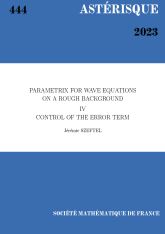Merci de renseigner votre adresse email : vous recevrez un lien de téléchargement.
En renseignant votre adresse email, vous acceptez de recevoir chaque trimestre un email d'information et vous prenez connaissance de notre politique de confidentialité.
Vous pouvez vous désinscrire à tout moment à l'aide des liens de désinscription.
Please share your email address, you'll get a download link in a heartbeat.
By entering your email address, you give your consent to receive an informational email on a quarterly basis and you are aware of our Privacy Policy.
You can unsubscribe at any time using the unsubscribe links.

